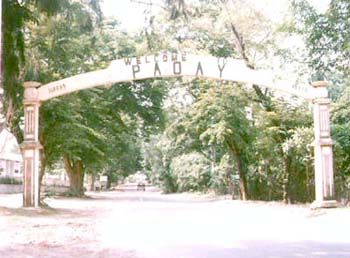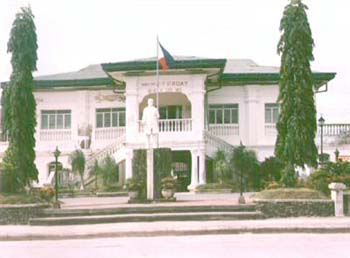

| Municipality of PAOAY |

It was founded by the Spaniards in 1593. But before the Spanish colonization, Paoay was a busy trading post of Indian merchants and then later Chinese and Japanese merchants. Its former name was "Bombay" and its former location was 2 kilometers west or the present site of the poblacion near a barrio name "Callaguip" which all is still existing along the shores of the China Sea. The early settlers were Indonesians but when the civilized Malays came, they drove the Indonesians away through come of them were captured and held slaves to help improve the settlement. Paoay center is some 22 kilometers away from Laoag City. The Paoay Lake situated in this town is surrounded by five fishing barrios. One of these barrios is Suba which is now the site of the famous Malaca�ang of the North which was built in 1977.
The people are engaged in agriculture. Their main crops are garlic and tobacco aside from rice. Loom weaving is the most popular cottage industry among the women folks. Some of the weaves are blankets, pillow cases, towels and bathrobes. The Roman Catholic Church was built in 1699, and was finished in the early 18th century along with the convent. The church and the belltower both underwent renovation in the late 18th century. The height of the belltower is 35 meters. The outer surface of the church is made of coral stones. The curving buttresses on the sides give local Baroque style of the structure. From the date of settlement in 1701, little could be said about the activities of the early settlers except that much had been done in the learing of the forest hearby. They converted the forest into rice and sugarlands. When sea rovers, the Moro pirates (called Tirong) attacked the settlement, many of the survivors built homes father inland where the present poblacion is located. Father inland, there were also setters who formed the town of Batac. Sensing the danger that those people were suffering from, the Moro raids, the people of Batac invited the people of Paoay to live with them. The Paoay people refused saying "macapaoay cami" which means they could get along independently. This was enough to offend the settlers from Batac and it is from this slogan incident that the town came to be called Paoay. The Paoay Lake has also a legendary origin. According to a legend which is well known to Ilocanos, the lake was formerly the site of a prosperous town. But the inhabitants were so haughty and proud to one another that their God punished them with a big earthquake which sank the town and subsequently flooded it, thus, forming the lake. |






